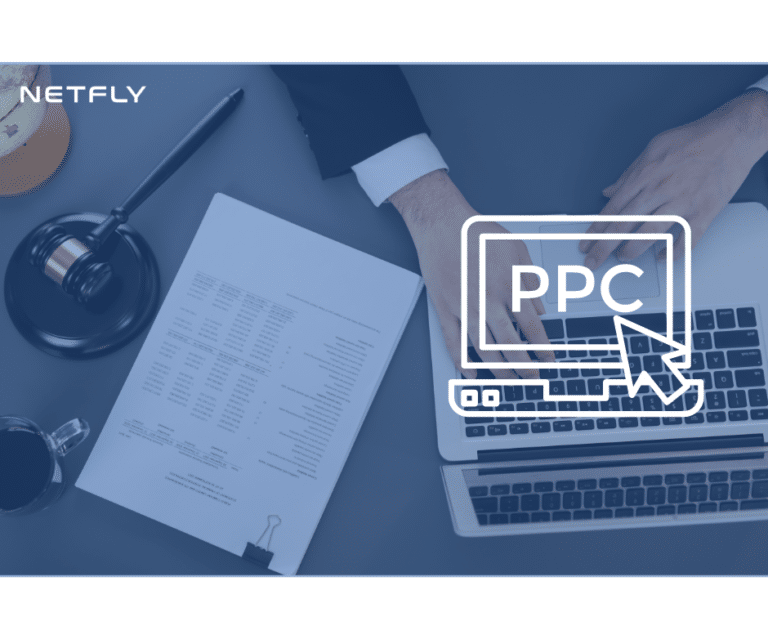You may not be aware that client feedback loops hold the key to unleashing your law firm’s potential for continuous improvement and growth. By tapping into the valuable insights provided by your clients, you can gain a deeper understanding of their needs and expectations, ultimately enhancing your firm’s performance. But how exactly can you harness these insights to take your law firm to the next level? Stay tuned to discover practical strategies and techniques that will help you leverage client feedback to elevate your firm’s service delivery and overall performance.
Key Takeaways
- Implement structured feedback collection methods for data-driven insights.
- Analyze feedback trends to enhance service quality and client satisfaction.
- Develop targeted improvement strategies based on client feedback analysis.
- Foster a culture of continuous improvement to elevate performance standards.
- Utilize client insights to optimize service delivery and build lasting relationships.
Understanding Client Feedback Loops
Understanding client feedback loops involves systematically collecting, analyzing, and implementing feedback from clients to enhance the quality of services provided by law firms. Feedback analysis plays a pivotal role in gauging client satisfaction levels and identifying areas that require improvement within a legal practice. By actively listening to what clients have to say, law firms can gain valuable insights into their experiences, preferences, and pain points, ultimately leading to enhanced service delivery.
Client satisfaction serves as a key metric in evaluating the effectiveness of legal services and the overall client experience. Through in-depth feedback analysis, law firms can explore the specifics of client interactions, perceptions, and expectations. This analytical approach enables firms to pinpoint strengths that contribute to high satisfaction levels and weaknesses that need attention for improvement.
Moreover, understanding client feedback loops isn’t merely about receiving comments but also about acting upon them. Law firms must implement actionable steps based on feedback analysis to address any shortcomings and optimize their services continuously. By proactively engaging with client feedback, firms demonstrate their dedication to client-centric practices and aim to deliver exceptional service that aligns with client expectations.
Implementing Feedback Collection Strategies
To enhance client feedback collection, law firms can strategically deploy diversified methods for gathering valuable insights into client experiences and preferences. Implementing feedback collection strategies is vital for fostering client engagement and improving overall service delivery.
Here are three effective approaches to explore:
- Surveys: Conducting structured surveys allows law firms to gather quantitative data on client satisfaction, preferences, and areas for improvement. Online surveys can be easily distributed through email or integrated into the firm’s website for convenient access by clients.
- Focus Groups: Organizing focus groups with a select group of clients can provide in-depth qualitative feedback. These sessions allow for a deeper exploration of client experiences, perceptions, and suggestions, leading to valuable insights that may not emerge through other feedback collection methods.
- Feedback Forms: Implementing feedback forms at key touchpoints, such as the conclusion of a case or after a client meeting, can capture immediate impressions and suggestions for improvement. These forms should be user-friendly and concise to encourage high response rates and facilitate efficient feedback analysis.
Analyzing Client Insights for Improvement
When analyzing client insights for improvement, you’re tasked with harnessing data to make informed decisions. Utilize these insights to develop strategies that enhance the performance of your law firm.
Data-driven decision-making is key to refining your firm’s practices and ensuring its growth.
Data-Driven Decision-Making
Utilizing client feedback data enables law firms to make strategic decisions based on valuable insights for continual improvement. By harnessing data analytics, firms can enhance the client experience through:
- Identifying trends: Pinpoint recurring issues or positive feedback to tailor services effectively.
- Predicting needs: Anticipate client requirements by analyzing past feedback to proactively address concerns.
- Measuring satisfaction: Quantify client satisfaction levels over time to gauge the impact of implemented improvements.
Analyzing client insights through data-driven decision-making allows law firms to adapt and refine their strategies, ultimately leading to enhanced client experiences and improved overall performance.
Performance Enhancement Strategies
By analyzing client insights, law firms can strategically enhance their performance through targeted improvements based on valuable feedback data. Feedback optimization is key to understanding client needs and preferences, allowing law firms to make client-centric improvements.
By focusing on what clients value most, such as communication effectiveness, responsiveness, or tailored legal solutions, firms can align their services more closely with client expectations. This process not only fosters stronger client relationships but also helps in identifying areas for growth and development within the firm.
Implementing client-centric improvements based on feedback data can lead to increased client satisfaction, loyalty, and ultimately, improved overall performance for the law firm.
Leveraging Feedback for Service Enhancements
When considering leveraging feedback for service enhancements, it’s vital to focus on:
- Service quality analysis
- Developing performance enhancement strategies
By analyzing feedback from clients, you can pinpoint areas for improvement and tailor services to meet their needs effectively. This process can lead to:
- Refined service delivery
- Increased client satisfaction
Service Quality Analysis
To improve the quality of your services effectively, harnessing feedback from clients is paramount in identifying areas for enhancements. Conducting thorough feedback analysis can provide valuable insights into your clients’ experiences with your firm.
- Feedback Collection: Implement systems to gather feedback consistently after client interactions.
- Data Analysis: Utilize software or tools to analyze feedback data for trends and patterns.
- Action Planning: Develop strategies based on feedback insights to enhance service quality and improve overall client experience.
Performance Enhancement Strategies
Implementing well-structured performance enhancement strategies based on client feedback is instrumental in refining service quality and fostering client satisfaction in law firms. Feedback analysis serves as a critical tool in identifying areas for improvement, allowing firms to address weaknesses and capitalize on strengths.
By actively engaging with clients, law firms can gather valuable insights that drive meaningful enhancements in their services. Encouraging client engagement through surveys, interviews, and feedback forms creates a continuous feedback loop that informs strategic decisions and service adjustments.
Leveraging client feedback to tailor services to their needs not only boosts client satisfaction but also cultivates long-lasting relationships built on trust and responsiveness. Embracing feedback-driven performance enhancement strategies enables law firms to adapt proactively to meet evolving client expectations and maintain a competitive edge.
Incorporating Feedback Into Operations
Incorporating feedback seamlessly into your law firm’s operations enhances efficiency and fosters continuous improvement. By actively utilizing feedback, you can refine your services and streamline internal processes.
Here’s how you can effectively integrate feedback into your operations:
- Feedback Collection Mechanisms: Implement user-friendly feedback channels such as surveys, suggestion boxes, or direct communication with clients. Make it easy for clients to provide their insights on the services they receive.
- Regular Review and Analysis: Set up a structured system to review and analyze feedback data. Identify common themes or trends in the feedback to pinpoint areas for improvement within your firm.
- Actionable Implementation Strategies: Develop clear action plans based on the feedback received. Assign responsibilities to team members for implementing changes and monitor the impact of these adjustments on enhancing your services.
Monitoring Performance Metrics
Integrating client feedback into your law firm’s operations lays the foundation for refining performance metrics effectively. Feedback analysis plays an important role in this process. By closely examining the insights provided by clients, you gain valuable information that can guide your performance optimization efforts.
Monitoring performance metrics allows you to track key indicators of your firm’s effectiveness. These metrics can encompass various aspects, including client satisfaction levels, case resolution times, client retention rates, and overall profitability. By regularly analyzing these metrics, you can identify areas that require improvement and make informed decisions based on data-driven insights.
Effective monitoring of performance metrics involves setting clear goals and benchmarks to measure your firm’s progress. By establishing specific targets, you can objectively assess your performance and make adjustments as needed to enhance your overall efficiency and client service quality. Additionally, utilizing performance dashboards or software tools can streamline the monitoring process and provide real-time updates on key metrics.
Furthermore, by integrating client feedback with performance metrics, you can gain a thorough understanding of your firm’s strengths and weaknesses. This holistic approach enables you to align your operational strategies with client expectations, ultimately leading to improved client satisfaction and enhanced firm performance.
Adapting Strategies Based on Feedback
To enhance your law firm’s performance based on client feedback, strategic adjustments are essential for ongoing improvement. Implementing feedback analysis and improvement strategies can have a substantial impact on your firm’s growth and client satisfaction.
Here’s how you can adapt your strategies based on feedback:
- Thorough Feedback Analysis: Start by conducting a detailed analysis of the feedback received from clients. Look for patterns, common themes, and areas of improvement highlighted by multiple clients. This analysis provides valuable insights into the specific aspects of your firm’s performance that require attention.
- Identifying Improvement Opportunities: Once you have identified key areas for improvement through feedback analysis, it’s important to develop targeted improvement strategies. These strategies should address the specific issues raised by clients and aim to enhance the overall client experience. Consider implementing training programs, process modifications, or technology upgrades to address these areas effectively.
- Iterative Implementation: Implement the improvement strategies in a phased and iterative manner. Monitor the impact of these changes on client feedback and performance metrics closely. Continuously gather feedback on the effectiveness of the implemented strategies and be prepared to adjust them based on ongoing feedback analysis.
Fostering Continuous Improvement
Upon analyzing feedback received from clients, fostering continuous improvement is a dynamic process essential for the growth and success of your law firm. Feedback optimization plays a pivotal role in this process, enabling you to identify areas for enhancement and refine your services. By actively seeking and incorporating client feedback, you can guarantee continuous evolution within your firm, staying attuned to the changing needs and expectations of your clientele.
Client-driven innovation should be at the core of your improvement efforts. Engaging with your clients to understand their perspectives, preferences, and challenges can lead to valuable insights that drive innovation within your firm. By aligning your services with client expectations and preferences, you can enhance service excellence and elevate the overall client experience.
Embracing a culture of continuous improvement not only benefits your clients but also empowers your firm to remain competitive and adaptable in a dynamic legal landscape. By consistently seeking ways to innovate and enhance your services based on client feedback, you demonstrate a commitment to excellence and responsiveness. This dedication to improvement can set your firm apart, fostering long-term client relationships built on trust, quality service, and client-centric values.
Frequently Asked Questions
How Can Law Firms Encourage Clients to Provide Honest Feedback?
To encourage clients to provide honest feedback, you can implement incentive programs and effective communication strategies. Offer rewards for their input and establish open channels for them to share their thoughts. By showing appreciation and creating a safe space for feedback, clients are more likely to be candid about their experiences.
Incentives and clear communication foster a culture of trust and openness, leading to valuable insights for your law firm’s growth and improvement.
What Tools Can Aid in Analyzing Client Feedback Effectively?
To analyze client feedback effectively, consider utilizing data analytics tools. These tools can help you sift through large volumes of feedback efficiently.
Additionally, sentiment analysis tools can aid in understanding the emotions and attitudes expressed in the feedback.
How Do Law Firms Ensure Feedback Leads to Tangible Service Improvements?
To guarantee feedback leads to tangible service improvements, focus on thorough feedback analysis. Identify patterns and prioritize areas needing enhancements. Implement changes based on feedback trends.
Regularly communicate improvements to clients to show responsiveness. Seek specific feedback on implemented changes to gauge effectiveness.
Continuous feedback loops facilitate ongoing service enhancements, demonstrating commitment to client satisfaction and quality improvement.
What Are Common Pitfalls to Avoid When Incorporating Client Feedback?
When incorporating client feedback, steer clear of biases that may skew insights. Foster a feedback culture to encourage open communication. Avoid common pitfalls like dismissing negative feedback or only seeking confirmation of existing beliefs.
Embrace diverse perspectives and treat feedback as a valuable tool for growth. By actively listening and implementing constructive suggestions, you can enhance your law firm’s performance and client satisfaction.
How Can Law Firms Measure the Impact of Feedback on Performance Metrics?
To measure the impact of feedback on performance metrics in your law firm, start by analyzing client engagement levels. Look at how feedback correlates with key performance indicators like client retention rates and referral numbers.
Final Thoughts
As you navigate the labyrinth of client feedback loops, remember that each insight is a key to accessing greater success for your law firm.
Just as a skilled navigator uses a compass to find their way, harnessing client insights will guide you towards continuous improvement and elevated performance.
Embrace the journey of feedback collection, analysis, and adaptation as a means to steer your firm towards unparalleled excellence in client service.










